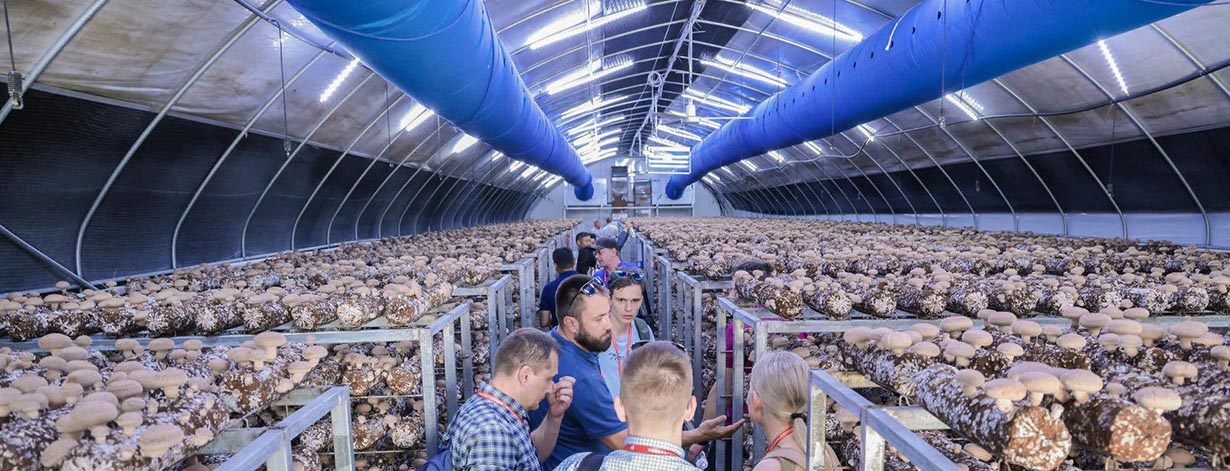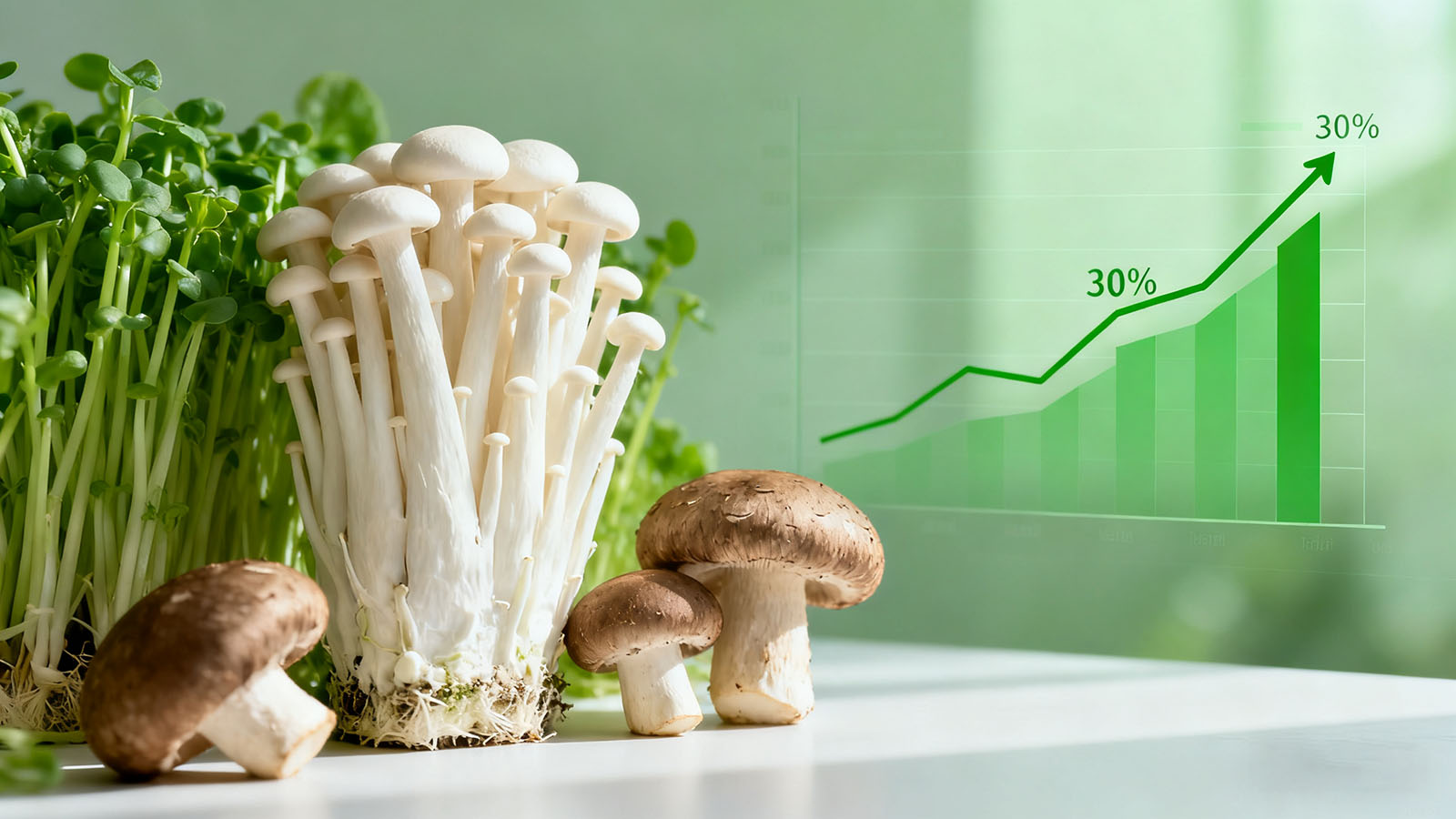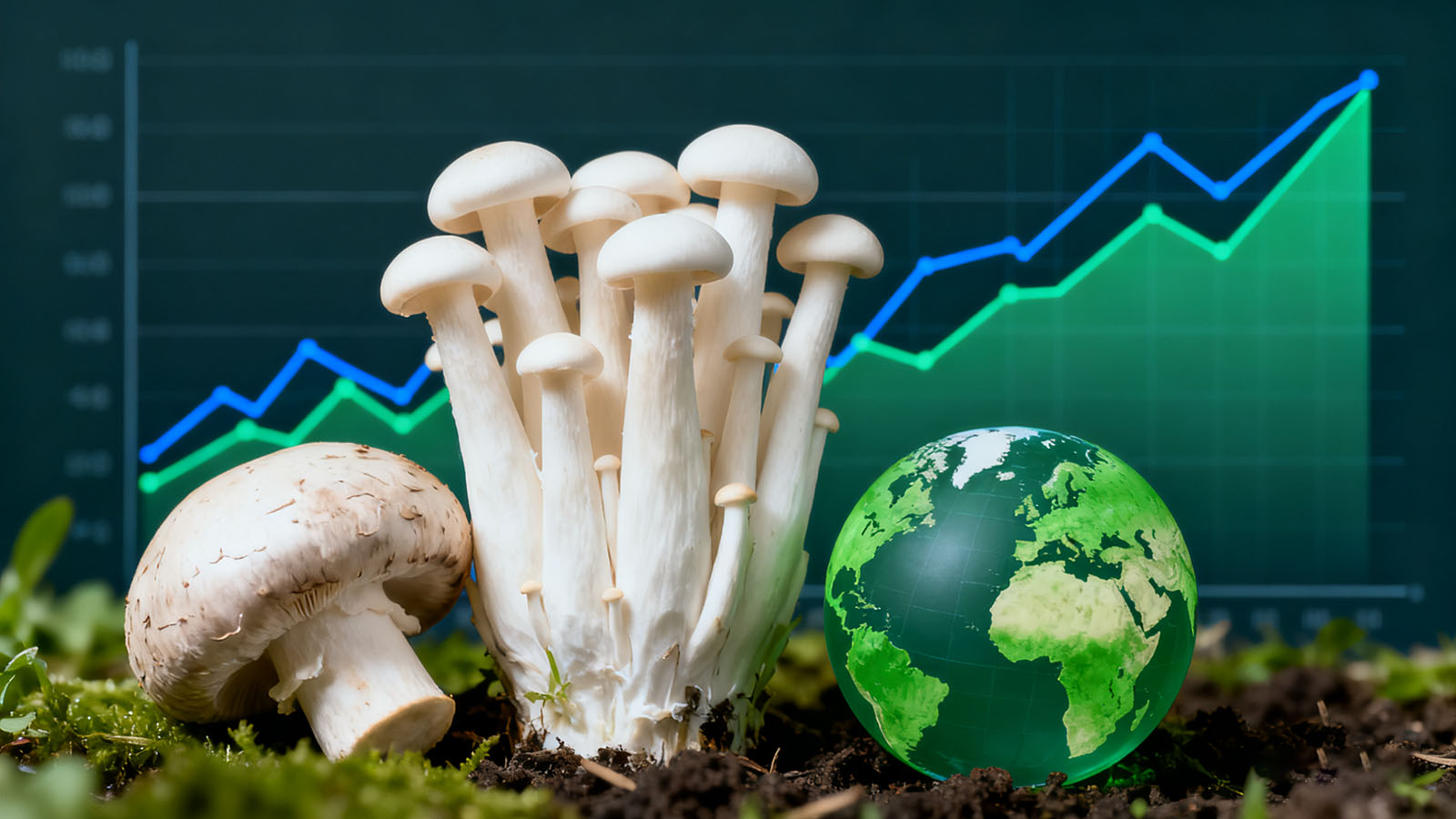
Driven by the global trend of healthy eating, the edible fungi industry is experiencing unprecedented opportunities for development. As a superfood with both nutritional value and sustainable development characteristics, mushrooms are reshaping the global food industry landscape with their high protein, low fat, and rich content of vitamins and minerals. This report aims to provide an in-depth analysis of the 2025 edible fungi market for industry professionals, including growers, processing companies, equipment suppliers, and traders, focusing on technological innovation, consumer trends, and international trade dynamics to help companies seize the core opportunities of this $80 billion market.
I. Current Status and 2025 Forecast of the Global Edible Fungi MarketMarket Size and Growth Drivers
According to the latest industry data, the global edible fungi market is expected to reach $82 billion by 2025, with a compound annual growth rate of around 8.5%. This growth is mainly driven by three factors:
Increased Consumer Demand:As consumers' attention to health continues to increase, edible fungi, as a natural and healthy food, are gaining favor with more and more consumers. With their high protein, low fat, and rich content of dietary fiber, vitamins, and minerals, they have become an ideal choice for healthy food. Moreover, edible fungi contain various bioactive components, such as polysaccharides and sterols, which have multiple functions including immune regulation, antioxidant, and anti-fatigue properties, meeting consumers' demand for functional foods.
Growing Demand for Functional Ingredients: In the food industry, edible fungi, as high-quality functional ingredients, are receiving increasing attention. Their rich nutritional components and bioactive substances make them applicable in multiple fields, including food, health products, and pharmaceuticals. For example, edible fungi extracts can be used to develop functional beverages and nutritional supplements, while edible fungi protein powder can serve as a plant-based protein alternative in food processing, meeting consumers' demand for plant protein.
Policy Support for Sustainable Development: Policy support for sustainable agricultural development also provides strong assurance for the growth of the edible fungi industry. Edible fungi cultivation has the advantages of efficient resource utilization, reduced environmental pollution, and promotion of ecological balance, in line with the concept of sustainable agricultural development. Many countries and regions have introduced a series of policies to encourage the cultivation and development of the edible fungi industry, such as providing cultivation subsidies, technical support, and market promotion, creating a favorable policy environment for the development of the industry.
Regional Market Differences Analysis
Asia-Pacific Region: The Asia-Pacific region will continue to maintain the largest market share (about 45%), with the Chinese market standing out. The Asia-Pacific region is the main production and consumption area for edible fungi globally, accounting for nearly half of the global market share. China is the world's largest producer and consumer of edible fungi, with its production and consumption accounting for over 70% of the global total. In addition, Japan, South Korea, and Thailand are also important production and consumption markets for edible fungi in the Asia-Pacific region, with market demand mainly focused on high-quality and specialty varieties of edible fungi.
European Market: The European market continues to see growing demand for organic certified products. As consumers' attention to food safety and environmental protection increases, organic food is becoming more and more popular among European consumers. Organic edible fungi, as a natural, pollution-free, and healthy food, meet the European consumers' demand for organic food. Many European countries have introduced strict organic food certification standards and regulatory measures, promoting the standardized development of the organic edible fungi industry.
North American Market: The North American market shows strong interest in functional mushroom products. In recent years, with the increasing health awareness and continuous scientific research, functional mushroom products have attracted more and more consumers in the North American market. For example, mushrooms such as Ganoderma lucidum and Cordyceps, which have immune-regulating and anti-fatigue functions, are widely used in health products and pharmaceuticals.
II. Technological Innovation Drives Industrial UpgradingIntelligent Cultivation Systems
Modern edible fungi cultivation is undergoing a transformation from traditional models to intelligent production:
Environmental Control Systems: Achieve precise regulation of the cultivation environment. By installing sensors and automated equipment, it can monitor and regulate the temperature, humidity, light, and carbon dioxide concentration of the edible fungi growth environment in real-time, achieving precise control. This precise control can provide the most suitable growth environment for edible fungi, increase yield and quality, and reduce energy consumption and environmental pollution.Automated Harvesting Equipment: Increases efficiency by more than 30%. Automated harvesting equipment can automatically identify and pick mushrooms based on their growth conditions and maturity, significantly increasing harvesting efficiency and reducing labor costs.
Internet of Things (IoT) Technology: Enables full traceability in edible fungi production. By installing sensors and monitoring equipment in cultivation bases, information on planting, growth, harvesting, and processing of edible fungi is uploaded to the cloud in real-time. Consumers can query the entire production process of edible fungi by scanning QR codes.Breakthroughs in Deep Processing Technology
Low-temperature Extraction Technology: Retains active components. This technology can extract at lower temperatures, maximizing the retention of active components in edible fungi, such as polysaccharides, sterols, and flavonoids.
Microencapsulation Technology: Enhances product stability by encapsulating active components in microcapsules, forming a protective layer to prevent contact with the external environment.
New Drying Processes: Reduces energy consumption. New drying processes, such as freeze-drying and microwave drying, can dry at lower temperatures, reducing energy consumption while maximizing the retention of nutritional components and flavor in edible fungi.
III. Product Trends and Market OpportunitiesFunctional Mushroom Products
Immune Regulation: Ganoderma lucidum, Pleurotus ostreatusCognitive Health: Hericium erinaceus
Sports Nutrition: CordycepsReady-to-Eat and Convenient Products
Ready-to-eat Mushroom SnacksMushroom Protein PowderFunctional Beverages
IV. International Trade Patterns and OpportunitiesMain Trade Flows
China: Maintains its position as the largest exporter.
Southeast Asian Market: Growing rapidly.
Europe and America: High-end market demand remains stable.Trade Barriers and Responses
Certification Requirements: Organic, HACCP, etc.
Cold Chain Logistics ChallengesImportance of Brand BuildingV. The 2025 Edible Fungi Full-Industry-Chain Innovation Expo: An Industry Barometer
As the most influential professional exhibition in Asia, the 2025 Edible Fungi Full-Industry-Chain Innovation Expo (April 14-16, Xiamen) will feature:
200+ Leading Global Companies Participating50+ Innovative Technologies Launched10+ Professional Forums300+ International Buyers' Procurement Meetings



创新博览会LOGO-white.png)


Copyright © China Chamber of Commerce of Food, Native Produce and Animal Products Edible Fungi and Products Branch
京公网安备11010102004652号 京ICP备05021290号-29 | Technical Support: Starify Privacy Policy Sitemap Contact Us
创新博览会LOGO.png)


